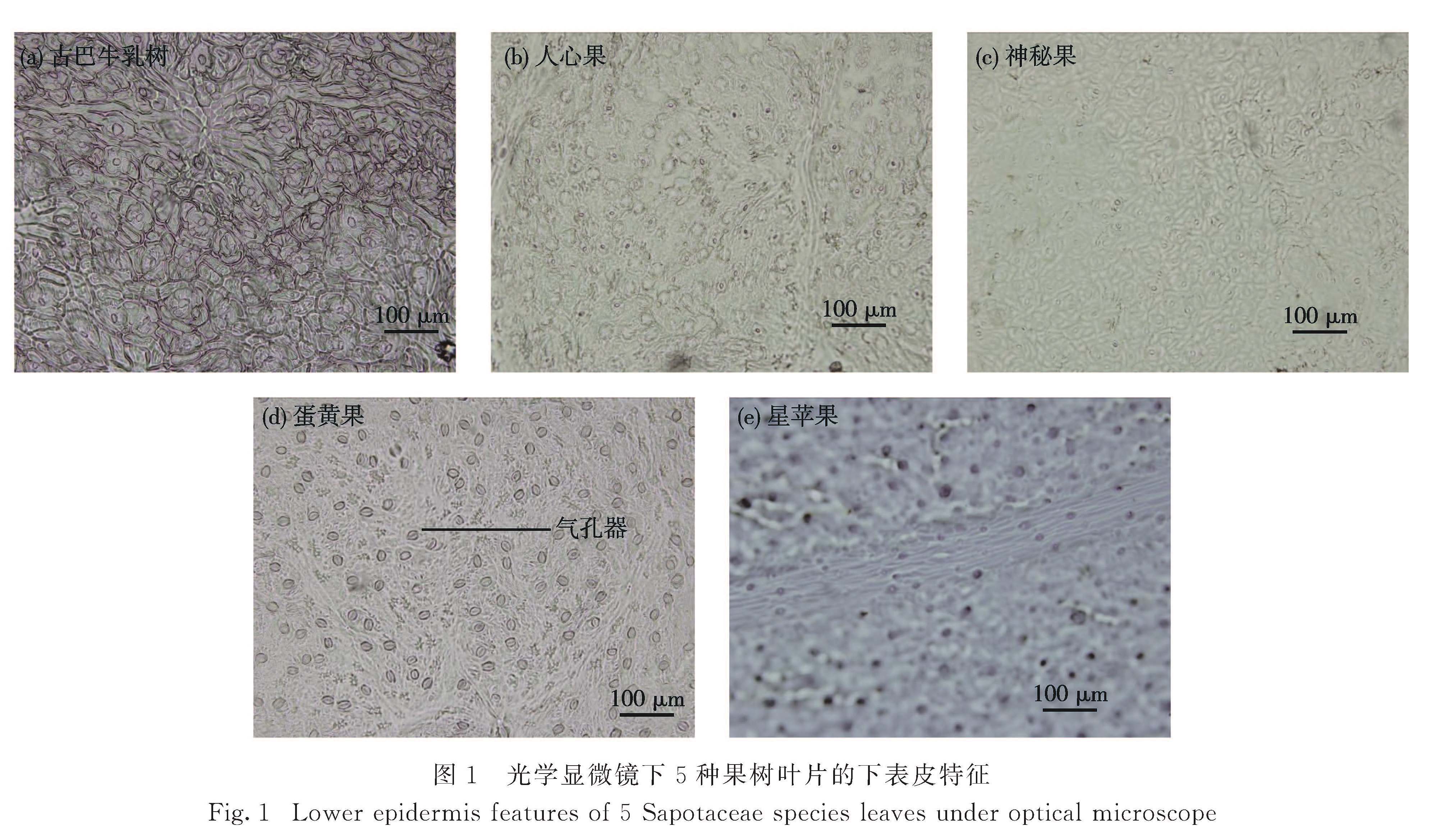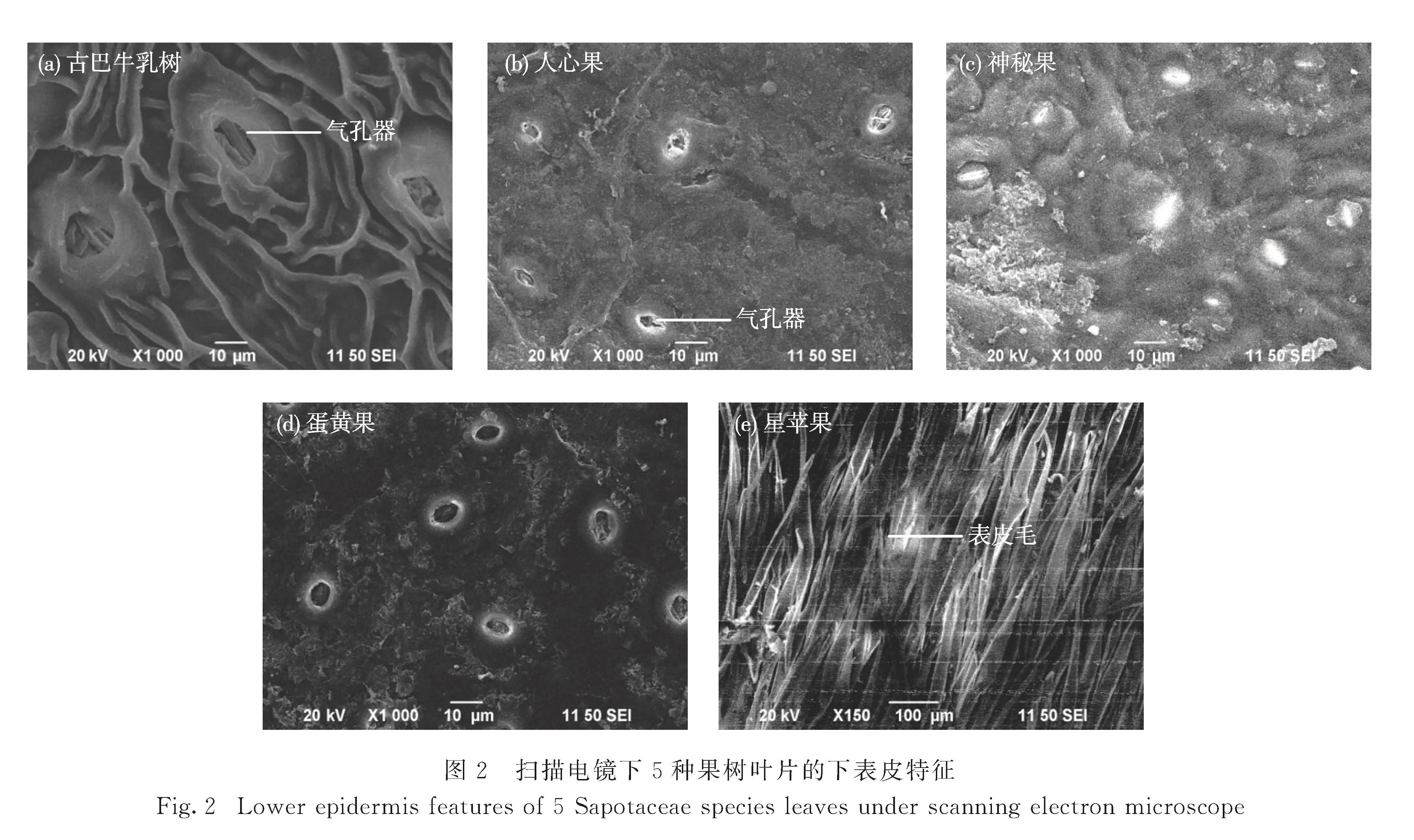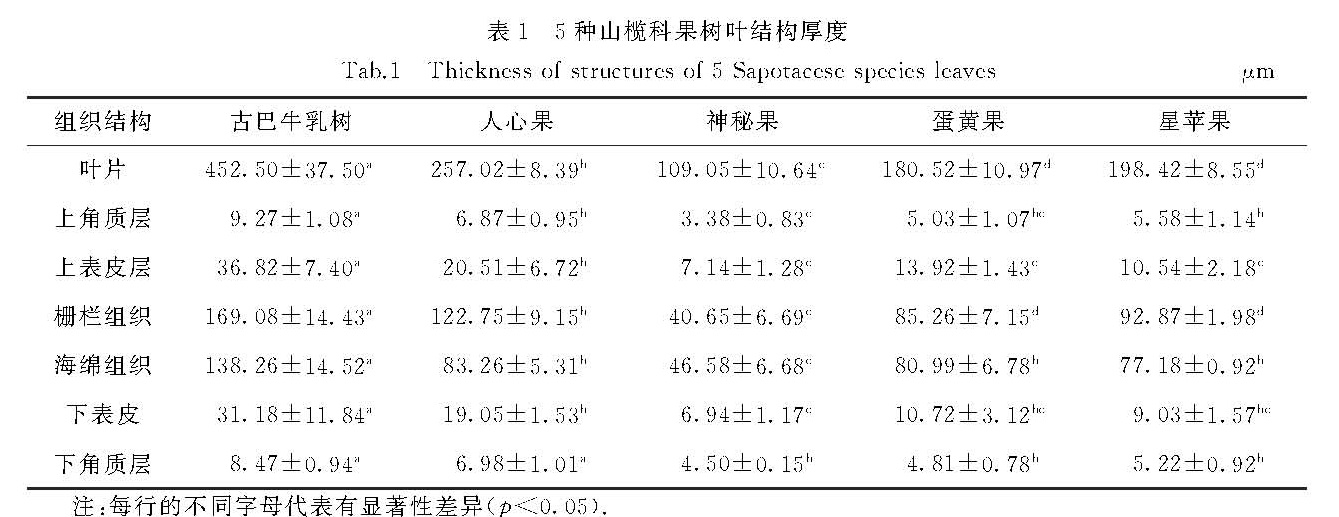为探讨古巴牛乳树(Manilkara roxburghiana(Wight)Dubard)、人心果(M.zapota(L.)van Royen)、蛋黄果(Lucuma nervosa A.DC.)、神秘果(Synsepalum dulcifcum Denill)、星苹果(Chrysophyllum cainito L.)叶片组织结构与其耐盐性的相关性,基于植株耐盐性强弱的研究,应用石蜡切片法,结合光学显微镜、扫描电镜研究了5种果树叶片的形态结构差异.结果表明:5种山榄科果树叶的气孔器均为无规则型; 耐盐性较高的古巴牛乳树、人心果叶片的气孔器密度相对较小,叶片、角质层、表皮层、栅栏组织的厚度明显高于其他3种较不耐盐的树种,且叶片结构呈现出典型的适应性特征.初步推断5种山榄科果树叶片的气孔器密度、组织结构与植株的耐盐性具有一定的相关性.
To explore the correlation between leaf anatomy of 5 Sapotaceae species(Manilkara roxburghiana (Wight)Dubard,Manilkara zapota(L.)van Royen,Synsepalum dulcifcum Denill,Lucuma nervosa A.DC. and Chrysophyllum cainito L.)and their salt-tolerance,we adopted paraffin section together with light microscopy and scanning electron microscopy to illustrate the leaf anatomy.The results indicated that the 5 Sapotaceae species all showed the anomocytic stomatal type,however,both M. roxburghiana and M. zapota had smaller stomatal density,as well as thicker leaf,cuticula,epidermis and palisade tissue than the other three sensitive species.Furthermore,the leaf structures of the two Manilkara species revealed their adaptability to the salty condition.Our preliminary study suggests that the stomatal density and leaf tissue structure are correlated with the salt tolerance of 5 Sapotaceae species.




